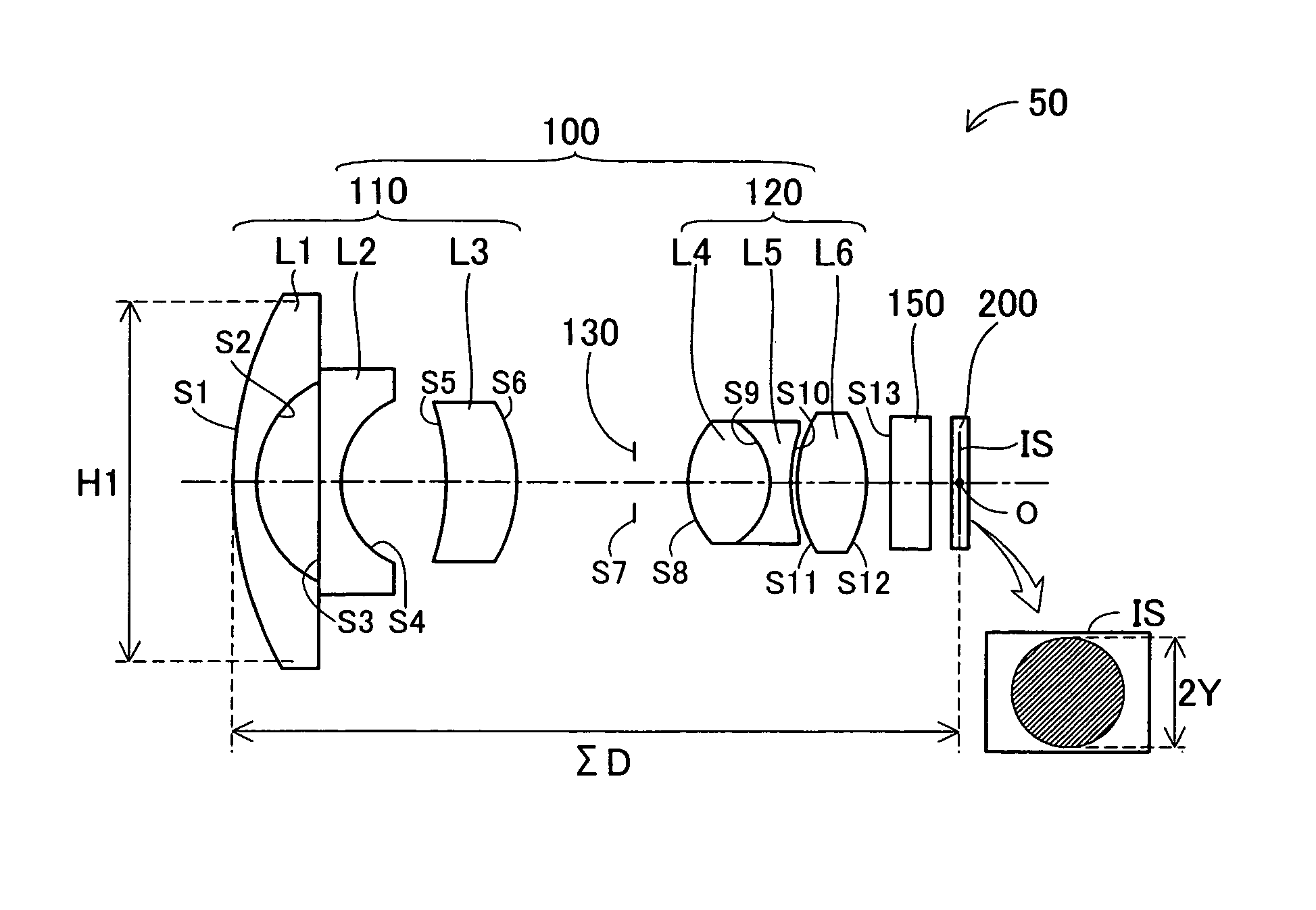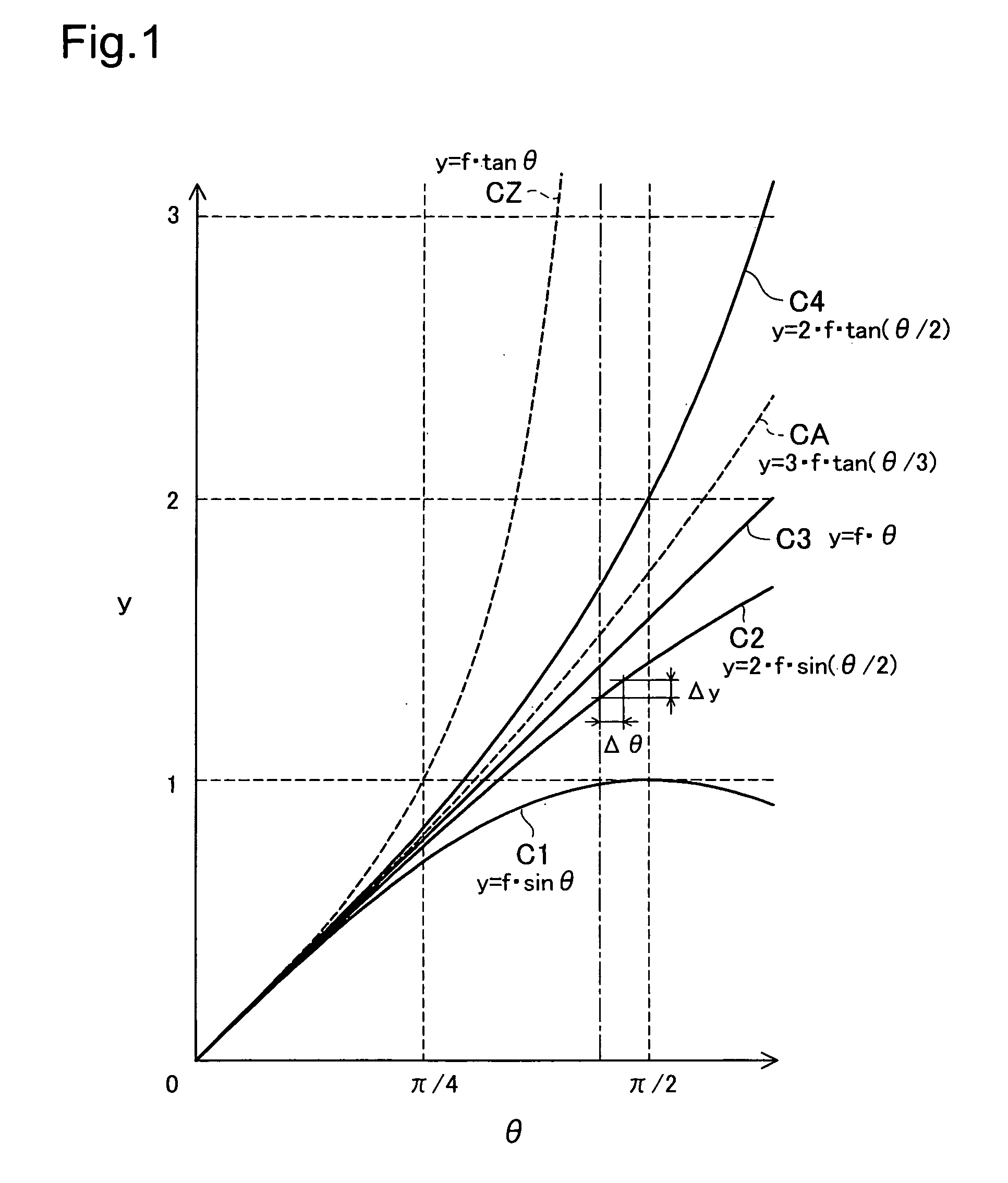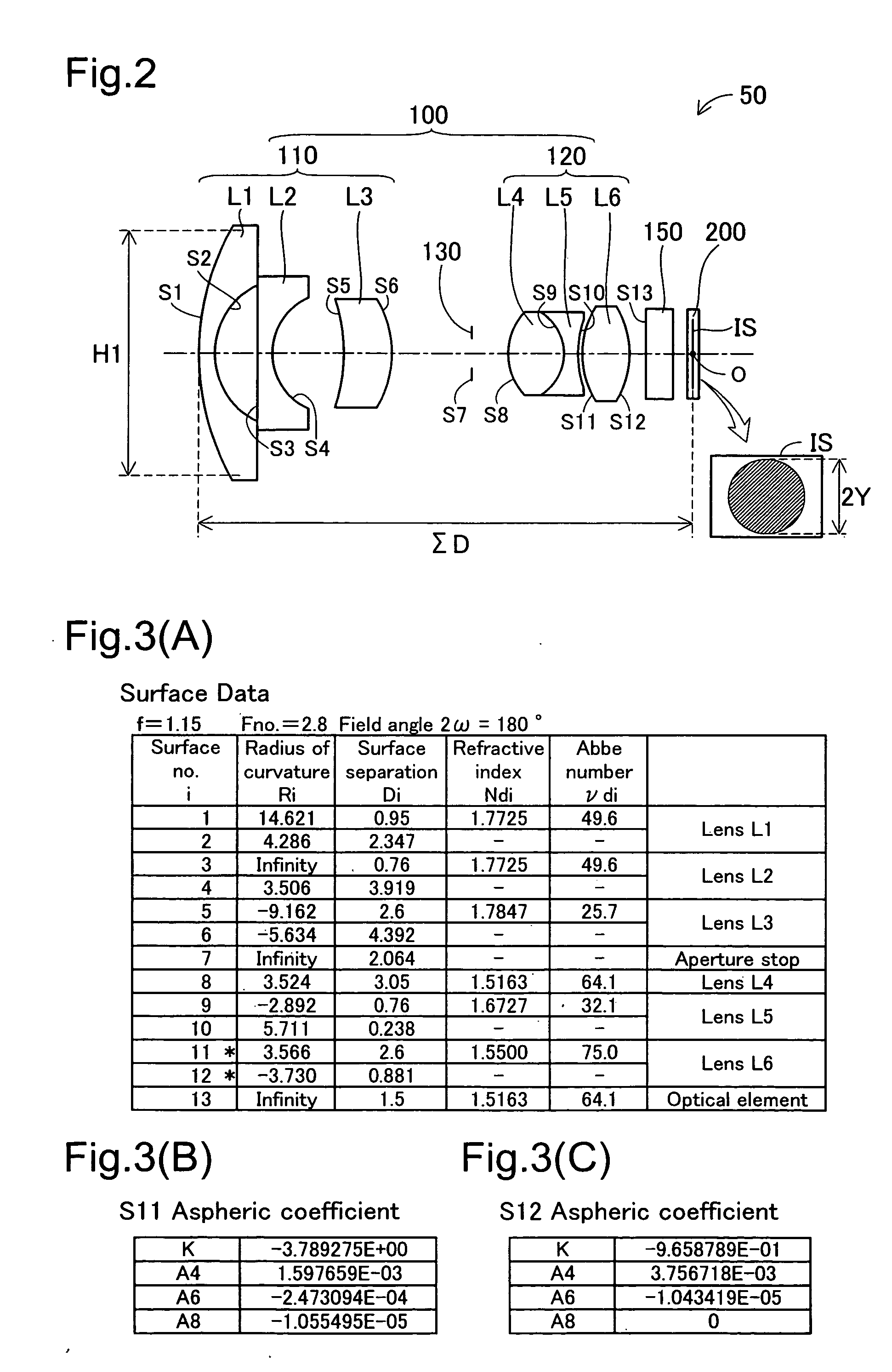Fisheye lens unit
a technology of fisheye lens and lens body, which is applied in the field of fisheye lens body, can solve the problems of relativly difficult to reduce the number of lenses for forming the fisheye lens body, and achieve the effect of compact lens body and high performan
- Summary
- Abstract
- Description
- Claims
- Application Information
AI Technical Summary
Benefits of technology
Problems solved by technology
Method used
Image
Examples
first embodiment
A. First Embodiment
A-1. Configuration of Fisheye Lens Unit:
[0060]FIG. 2 shows basic configuration of an imaging apparatus 50 according to the first embodiment. As shown in the drawing, the imaging apparatus 50 includes a fisheye lens unit 100, a solid-state imaging device 200 such as a CCD (charge coupling device), and an optical element 150 provided between the fisheye lens unit 100 and the solid-state imaging device 200. The optical element 150 includes, for example, an optical filter, cover glass of the solid-state imaging device, or the like. The solid-state imaging device 200 has an image surface (imaging surface) IS.
[0061] The fisheye lens unit (also called simply “lens unit” hereafter) 100 includes a plurality of lenses that constitute the fisheye lens. The equidistant projection method represented by y=f·θ (see curve C3 in FIG. 1) is used for the lens unit 100 of this embodiment.
[0062] The lens unit 100 includes a first lens group 110 arranged on the object side, a secon...
second embodiment
B. Second Embodiment
B-1. Configuration of Fisheye Lens Unit:
[0099]FIG. 7 shows basic configuration of an imaging apparatus 50B according to the second embodiment. FIG. 7 is similar to FIG. 2, but the lens unit 100B is modified. In this embodiment, similar to the first embodiment, the equidistant projection method represented by y=f·θ (see curve C3 in FIG. 1) is used for the lens unit 100B.
[0100] The lens unit 100B, similar to the first embodiment, includes a first lens group 110B arranged on the object side, a second lens group 120B arranged on the image side, and an aperture stop 130B arranged between the first lens group 110B and the second lens group 120B.
[0101] The first lens group 110B is constituted by three lenses. The first lens L1 is a concave meniscus lens that has a convex surface on the object side and has a concave surface on the image side. The second lens L2 is a biconcave lens that has concave surfaces on both the object side and the image side. The third lens L3...
third embodiment
C. Third Embodiment
C-1. Configuration of Fisheye Lens Unit:
[0110]FIG. 12 shows basic configuration of an imaging apparatus 50C according to the third embodiment. FIG. 12 is similar to FIG. 2, but the lens unit 100C is modified. In this embodiment, in contrast to the first and second embodiments, the projection method represented by y=3·f·tan(θ / 3) (see curve CA in FIG. 1) is used for the lens unit 100C.
[0111] The lens unit 100C, similar to the first embodiment, includes a first lens group 110C arranged at the object side, a second lens group 120C arranged at the image side, and an aperture stop 130C arranged between the first lens group 110C and the second lens group 120C.
[0112] The first lens group 110C is constituted by four lenses. The first lens L1 is a concave meniscus lens that has a convex surface on the object side and has a concave surface on the image side. The second lens L2 is a plano-concave lens that has a planar surface on the object side and a concave surface on t...
PUM
 Login to View More
Login to View More Abstract
Description
Claims
Application Information
 Login to View More
Login to View More - R&D
- Intellectual Property
- Life Sciences
- Materials
- Tech Scout
- Unparalleled Data Quality
- Higher Quality Content
- 60% Fewer Hallucinations
Browse by: Latest US Patents, China's latest patents, Technical Efficacy Thesaurus, Application Domain, Technology Topic, Popular Technical Reports.
© 2025 PatSnap. All rights reserved.Legal|Privacy policy|Modern Slavery Act Transparency Statement|Sitemap|About US| Contact US: help@patsnap.com



